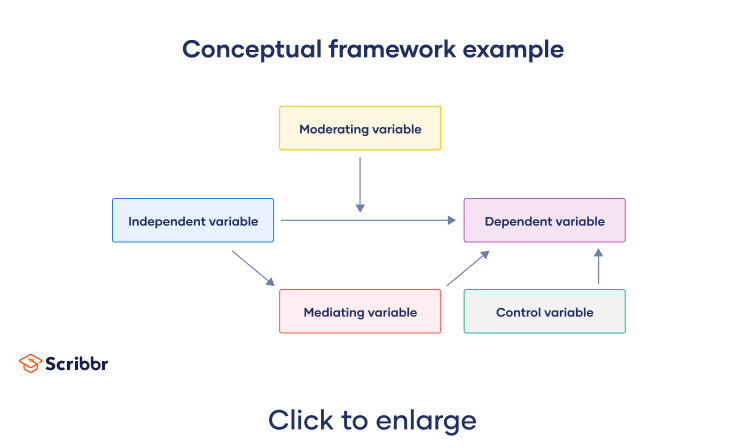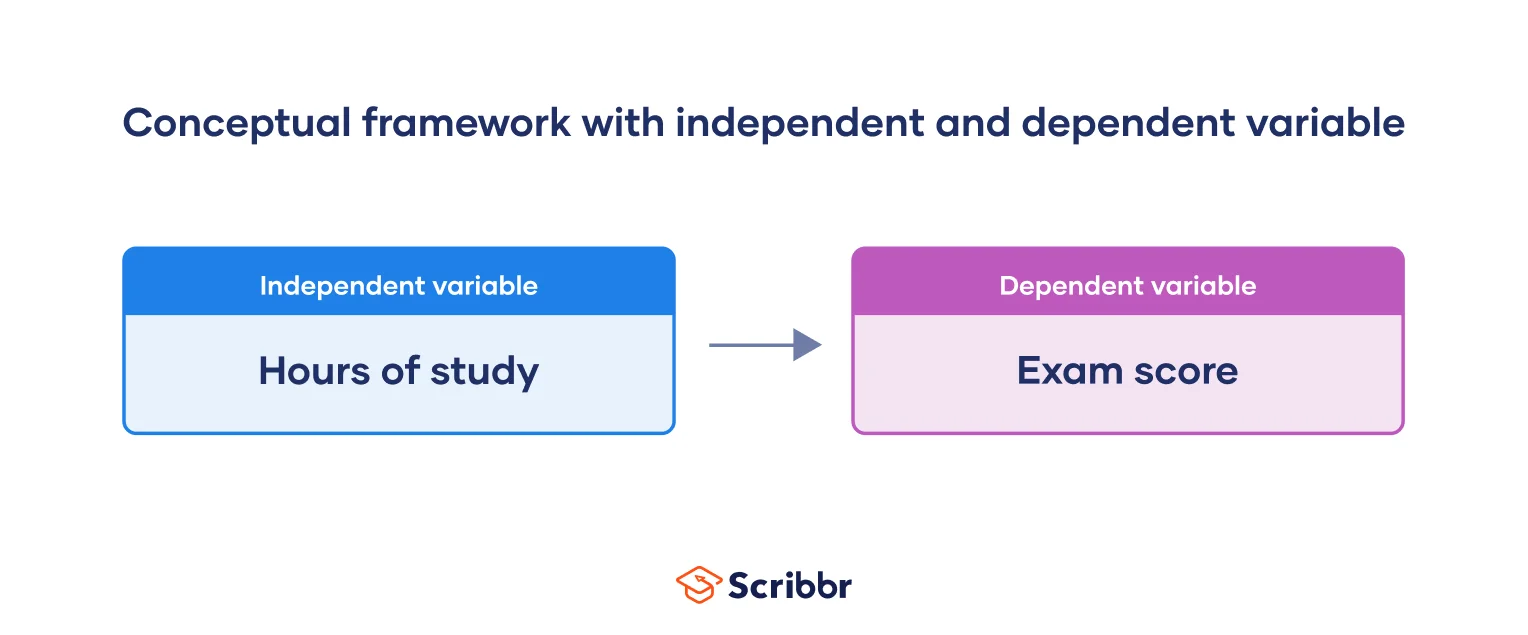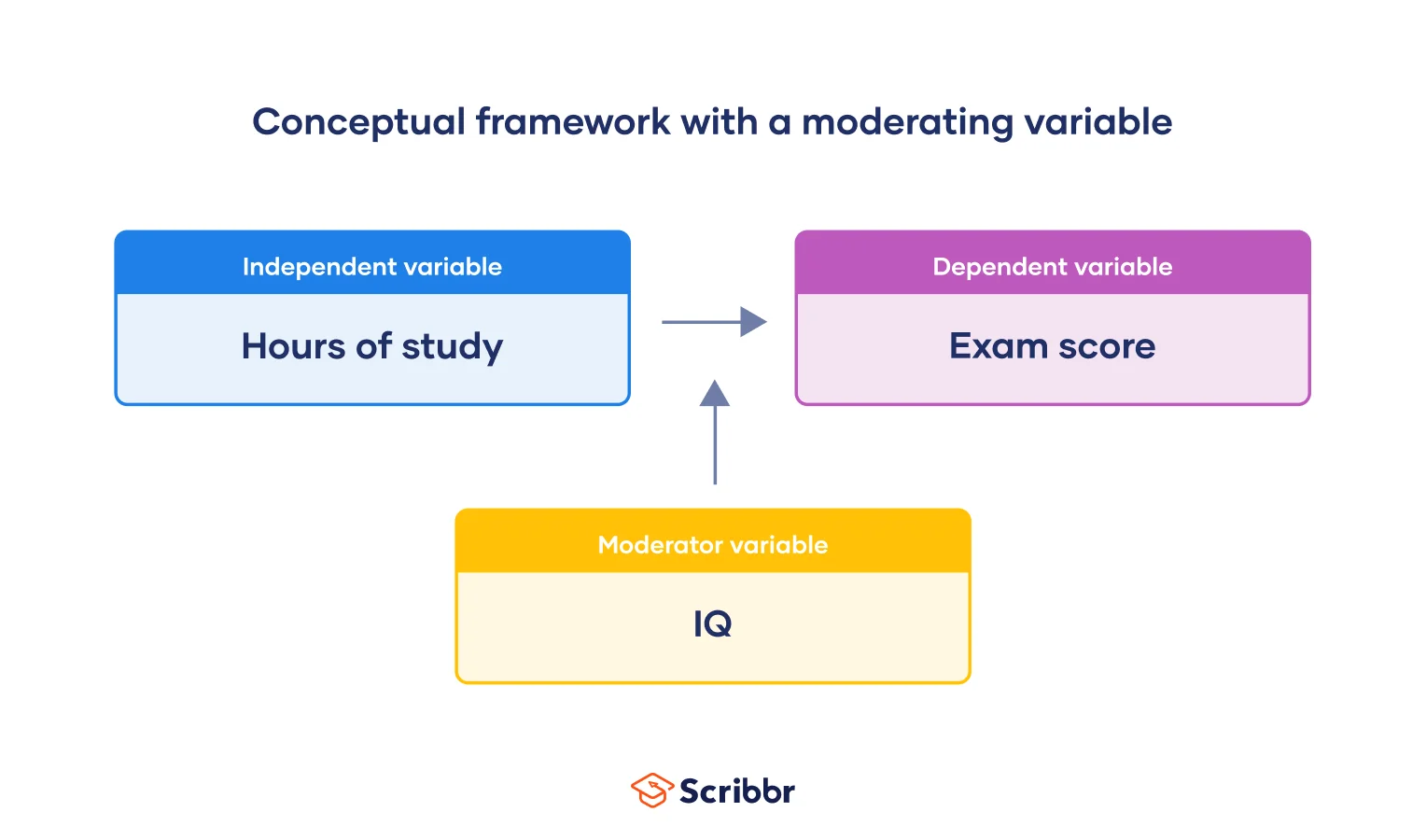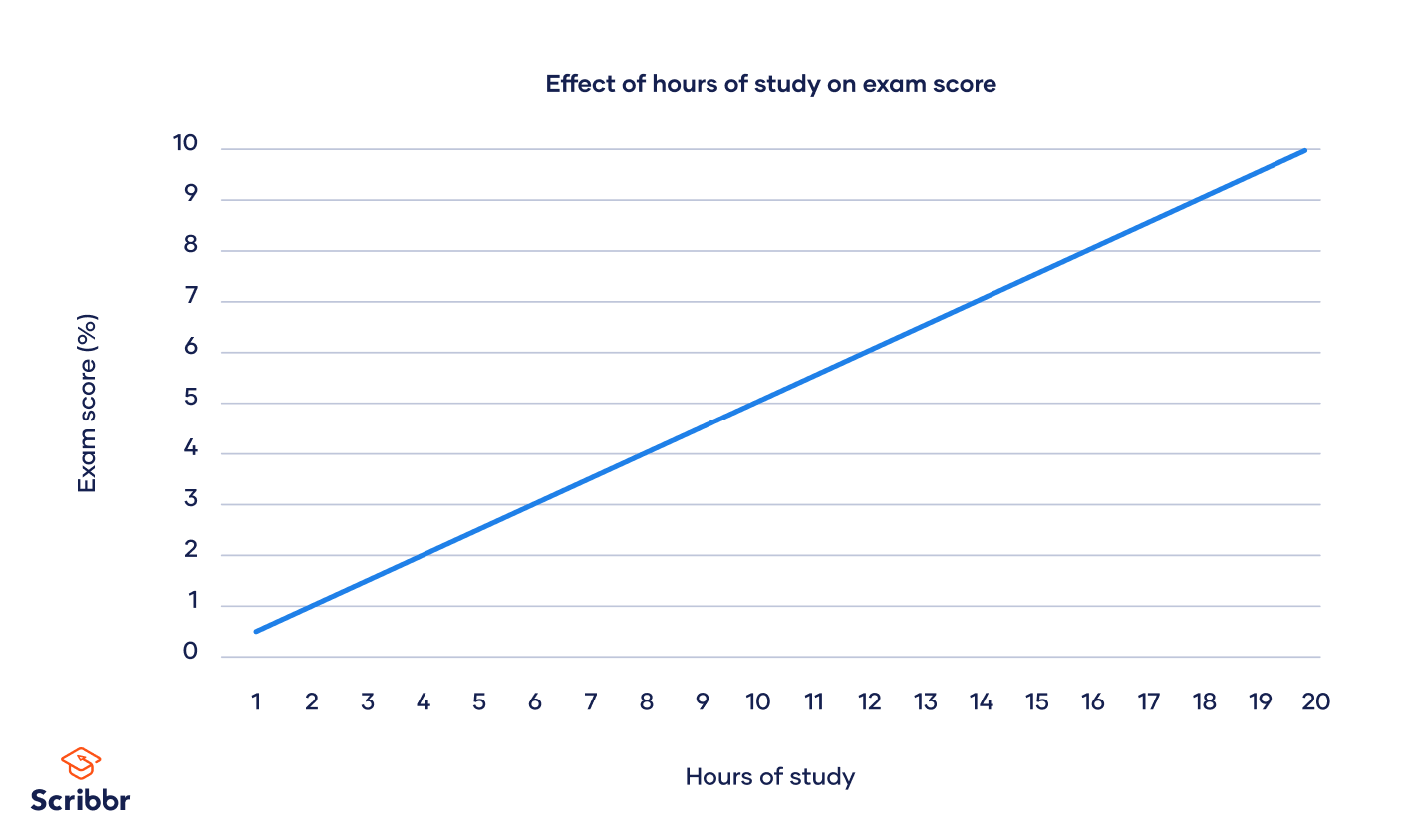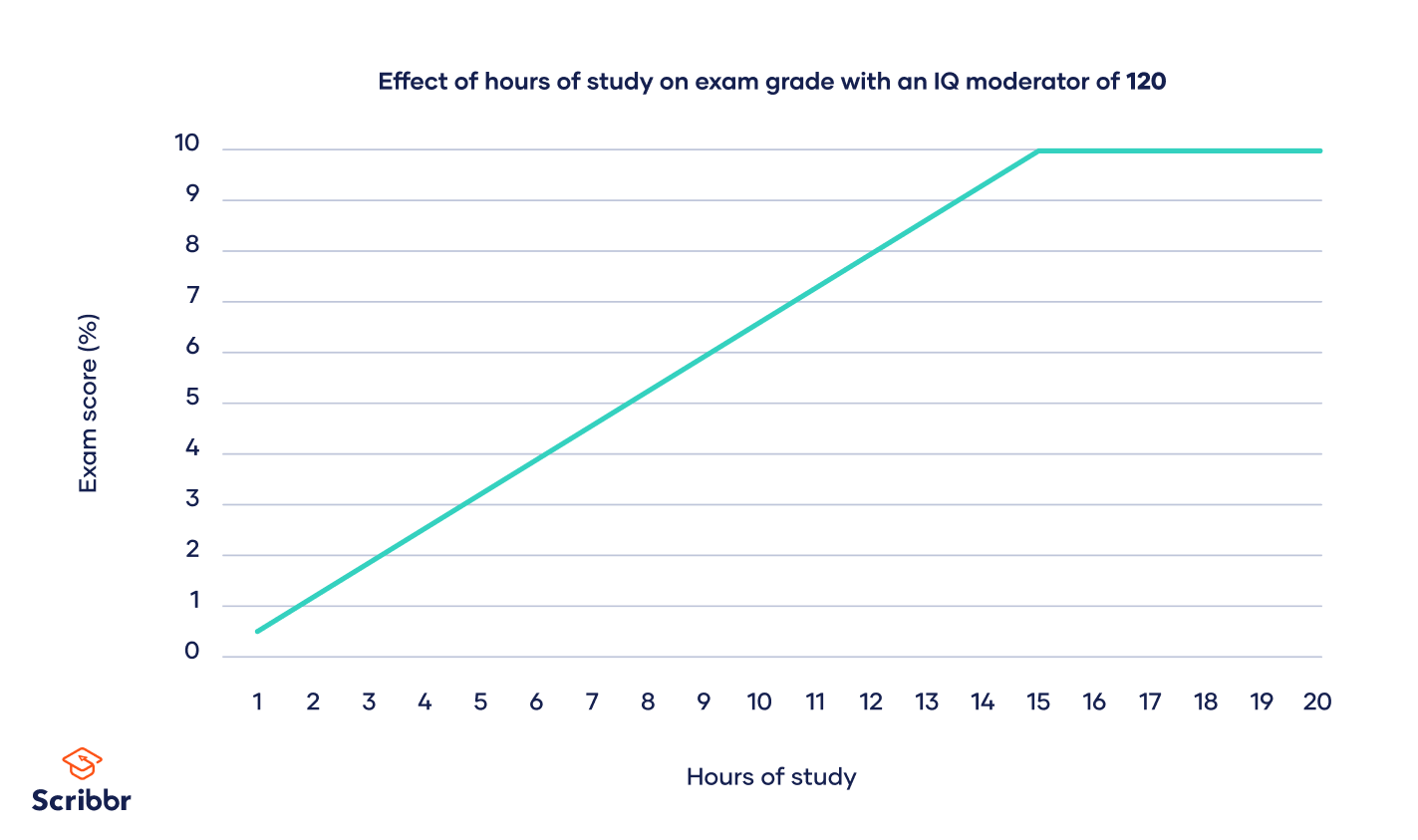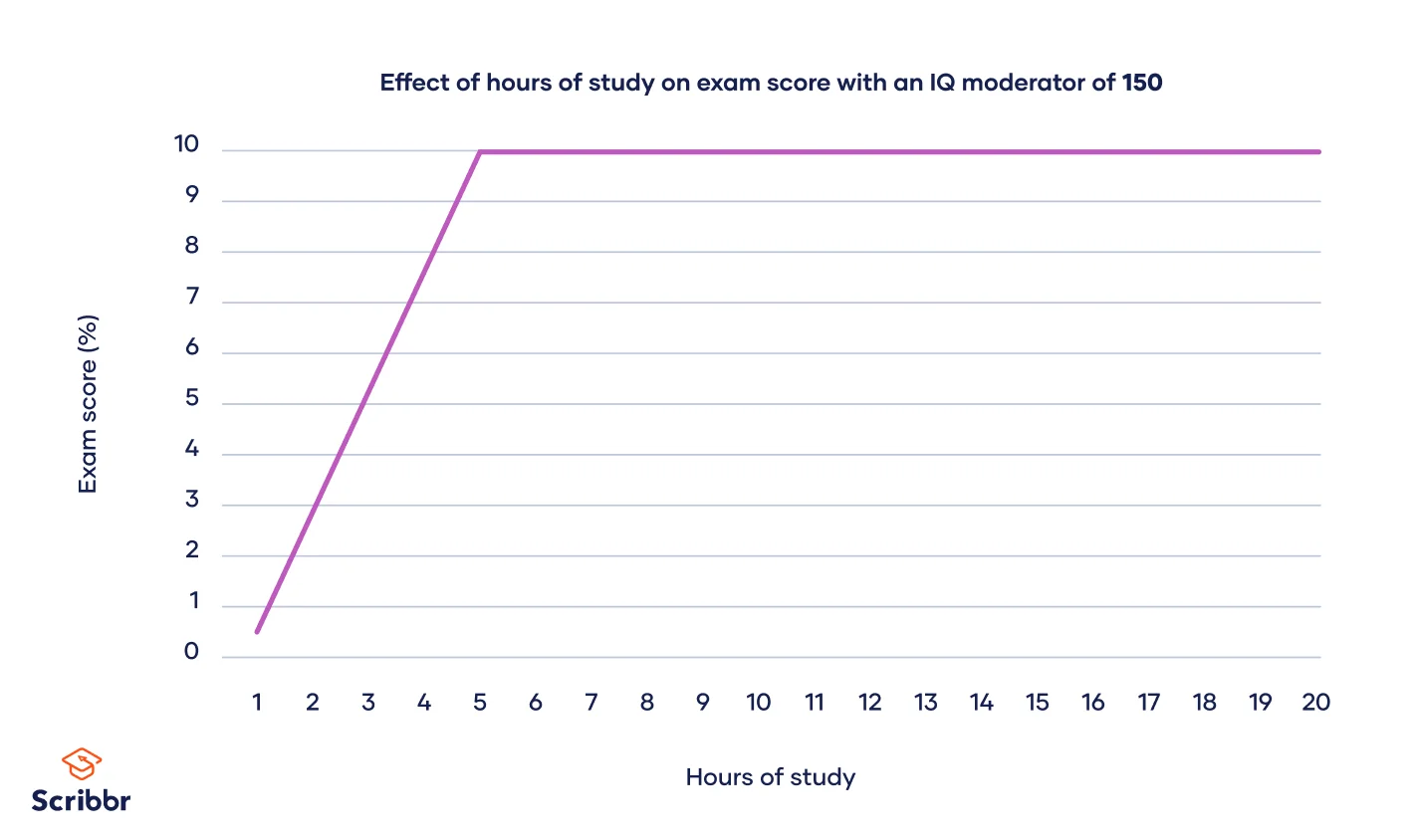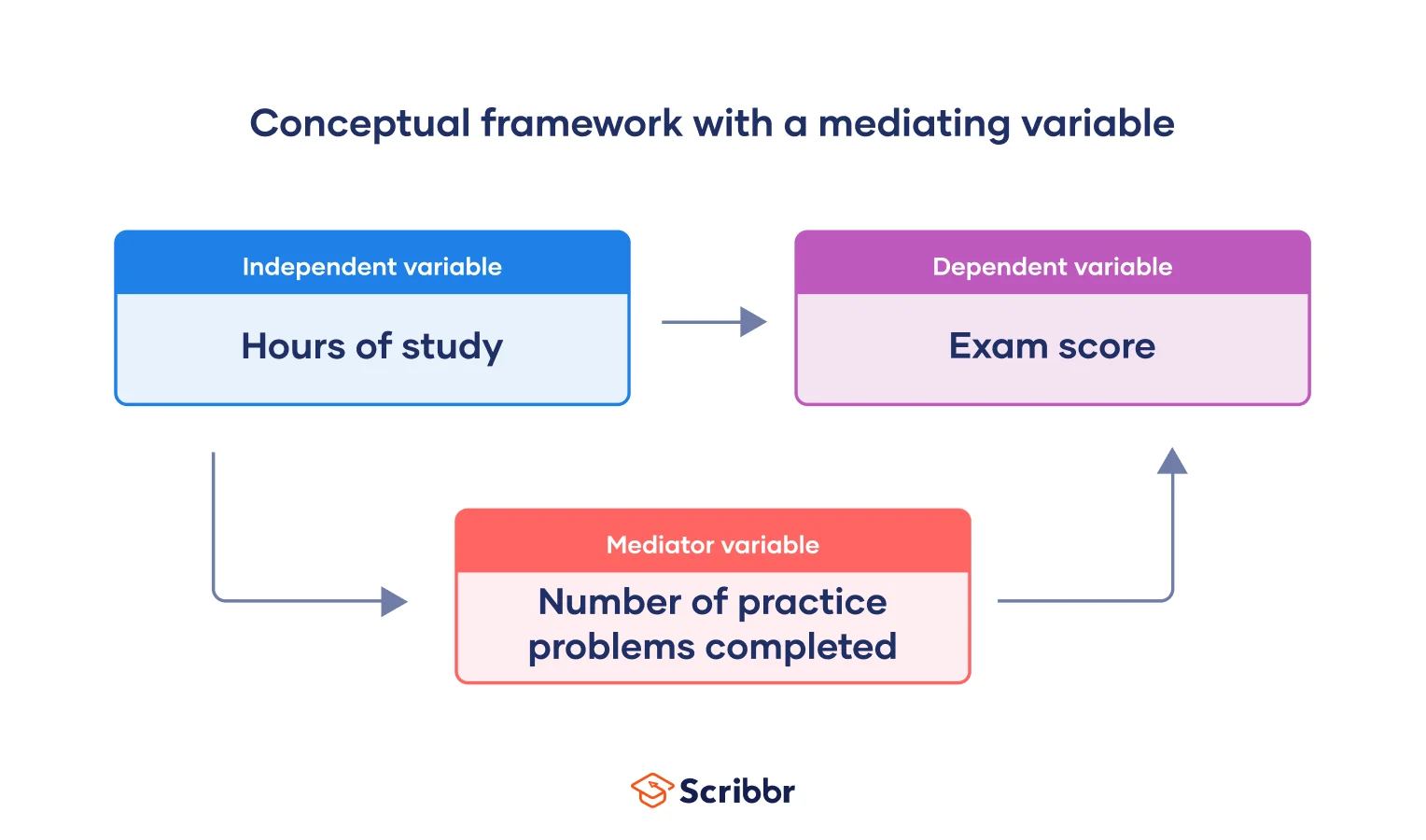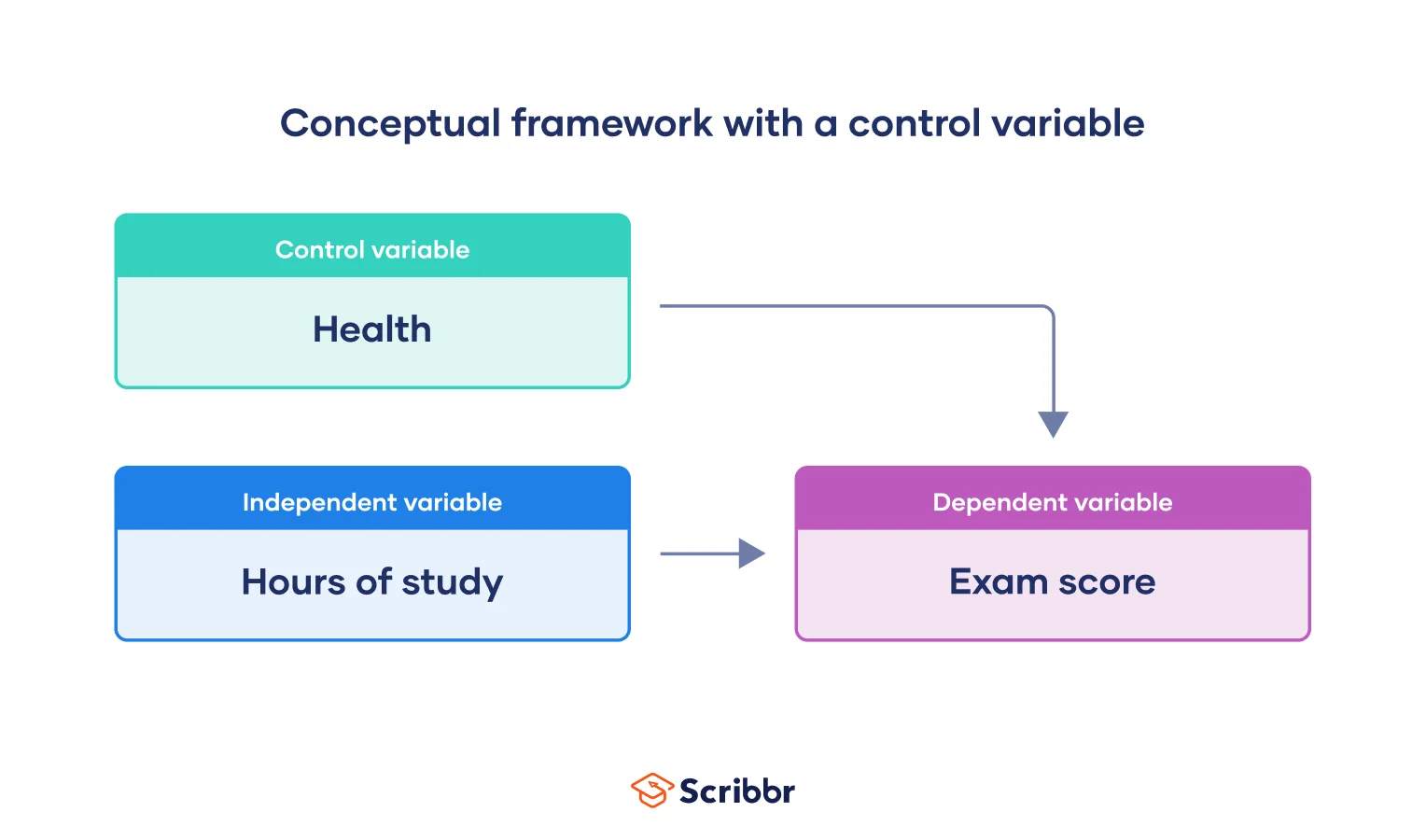What Is a Conceptual Framework? | Tips & Examples
A conceptual framework illustrates the expected relationship between your variables. It defines the relevant objectives for your research process and maps out how they come together to draw coherent conclusions.
Keep reading for a step-by-step guide to help you construct your own conceptual framework.
Table of contents
Developing a conceptual framework in research
A conceptual framework is a representation of the relationship you expect to see between your variables, or the characteristics or properties that you want to study.
Conceptual frameworks can be written or visual and are generally developed based on a literature review of existing studies about your topic.
Step 1: Choose your research question
Your research question guides your work by determining exactly what you want to find out, giving your research process a clear focus.
However, before you start collecting your data, consider constructing a conceptual framework. This will help you map out which variables you will measure and how you expect them to relate to one another.
Step 2: Select your independent and dependent variables
In order to move forward with your research question and test a cause-and-effect relationship, you must first identify at least two key variables: your independent and dependent variables.
- The expected cause, ‘hours of study’, is the independent variable (the predictor, or explanatory variable)
- The expected effect, ‘exam score’, is the dependent variable (the response, or outcome variable).
In other words, you suspect that ‘exam score’ depends on ‘hours of study’. Thus, your hypothesis will be that the more hours a student studies, the better they will do on the exam.
Note that causal relationships often involve several independent variables that affect the dependent variable. For the purpose of this example, we’ll work with just one independent variable (‘hours of study’).
Step 3: Visualise your cause-and-effect relationship
Now that you’ve figured out your research question and variables, the first step in designing your conceptual framework is visualising your expected cause-and-effect relationship.
We demonstrate this using basic design components of boxes and arrows. Here, each variable appears in a box. To indicate a causal relationship, each arrow should start from the independent variable (the cause) and point to the dependent variable (the effect).
Step 4: Identify other influencing variables
It’s crucial to identify other variables that can influence the relationship between your independent and dependent variables early in your research process.
Some common variables to include are moderating, mediating, and control variables.
Moderating variables
Moderating variable (or moderators) alter the effect that an independent variable has on a dependent variable. In other words, moderators change the ‘effect’ component of the cause-and-effect relationship.
Let’s add the moderator ‘IQ’. Here, a student’s IQ level can change the effect that the variable ‘hours of study’ has on the exam score. The higher the IQ, the fewer hours of study are needed to do well on the exam.
We expect that the ‘IQ’ moderator moderates the effect that the number of study hours has on the exam score.
Let’s take a look at how this might work. The graph below shows how the number of hours spent studying affects exam score. As expected, the more hours you study, the better your results. Here, a student who studies for 20 hours will get a perfect score.
But the graph looks different when we add our ‘IQ’ moderator of 120. A student with this IQ will achieve a perfect score after just 15 hours of study.
Below, the value of the ‘IQ’ moderator has been increased to 150. A student with this IQ will only need to invest five hours of study in order to get a perfect score.
Here, we see that a moderating variable does indeed change the cause-and-effect relationship between two variables.
Mediating variables
Now we’ll expand the framework by adding a mediating variable. Mediating variables link the independent and dependent variables, allowing the relationship between them to be better explained.
Hours of study impacts the number of practice problems, which in turn impacts the exam score.
Here’s how the conceptual framework might look if a mediator variable were involved:
In this case, the mediator helps explain why studying more hours leads to a higher exam score. The more hours a student studies, the more practice problems they will complete; the more practice problems completed, the higher the student’s exam score will be.
Moderator vs mediator
It’s important not to confuse moderating and mediating variables. To remember the difference, you can think of them in relation to the independent variable:
- A moderating variable is not affected by the independent variable, even though it affects the dependent variable. For example, no matter how many hours you study (the independent variable), your IQ will not get higher.
- A mediating variable is affected by the independent variable. In turn, it also affects the dependent variable. Therefore, it links the two variables and helps explain the relationship between them.
Control variables
Lastly, control variables must also be taken into account. These are variables that are held constant so that they don’t interfere with the results. Even though you aren’t interested in measuring them for your study, it’s crucial to be aware of as many of them as you can be.
This makes ‘health’ a good candidate for a control variable. It still impacts our results, but we aren’t interested in studying it.
Now, we add ‘health’ to our conceptual framework, but decide to keep it constant. This means we’ll only include participants who are in good health on the day of the exam.
Frequently asked questions about conceptual models
Cite this Scribbr article
If you want to cite this source, you can copy and paste the citation or click the ‘Cite this Scribbr article’ button to automatically add the citation to our free Reference Generator.
Swaen, B. & George, T. (2024, March 18). What Is a Conceptual Framework? | Tips & Examples. Scribbr. Retrieved 9 April 2025, from https://www.scribbr.co.uk/research-methods/conceptual-frameworks/
